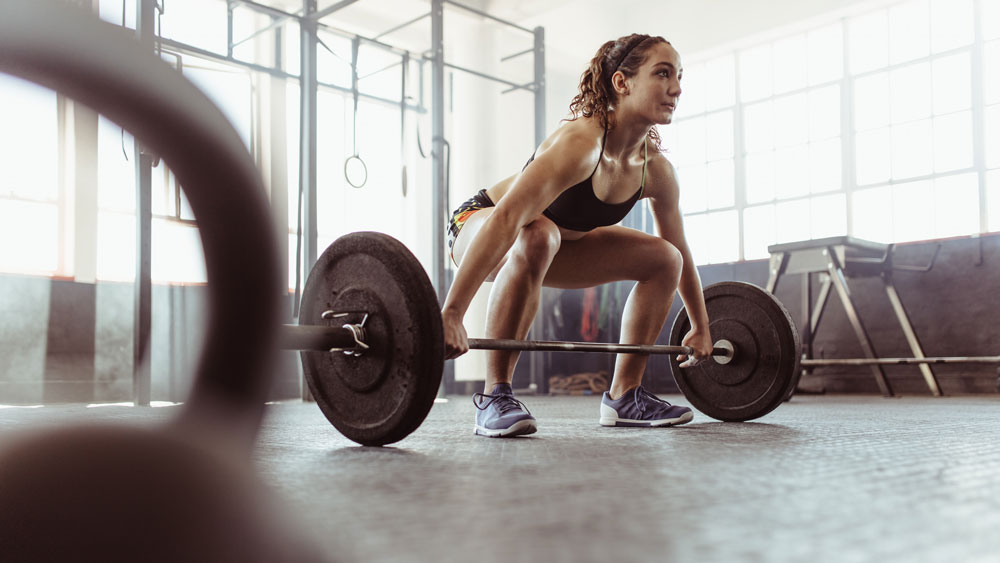How To Do The Snatch-Grip Deadlift
Widen your grip on the bar for a variation that should be in everyone’s locker

Little changes to the form of an exercise can make a huge difference. We’re saying that up front, because when we tell you that the snatch-grip deadlift is essentially a deadlift with a wider grip, you might wonder how much that could really alter the effects of the powerhouse move.
Widening the grip on the bar actually produces two substantial changes to the benefits of the deadlift. The first is that it targets the upper-back muscles more than the traditional lift. This can also reduce the load on your lower back, if you are worried about tweaking that area.
The second is that the different hand placement increases the range of motion involved, simply because your arms don’t reach down as far when your grip is wider, so you have to move your hips back more and drop deeper to pick up the bar. This helps to improve your mobility and works the hamstrings in a greater range of motion, which will translate into better lifting when you return to the standard deadlift.
See related
How To Do The Snatch-Grip Deadlift
When first attempting the snatch-grip deadlift, it’s wise to substantially reduce the load you lift in a standard deadlift. The wider grip will feel strange and the increased focus on your upper back can be uncomfortable, and indeed risky, if you choose too heavy a weight.
Stand with your feet under a barbell. Bend your knees and move your hips back to lower and take hold of the bar, with your hands around double shoulder-width apart, your elbows locked out and your upper back flat. Use your legs to lift the bar off the ground, then, as it comes past your knees, drive your hips forwards to stand up and complete the lift. Hinge at the hips to lower the bar slowly back to the start.
Sign up for workout ideas, training advice, reviews of the latest gear and more.

Nick Harris-Fry is a journalist who has been covering health and fitness since 2015. Nick is an avid runner, covering 70-110km a week, which gives him ample opportunity to test a wide range of running shoes and running gear. He is also the chief tester for fitness trackers and running watches, treadmills and exercise bikes, and workout headphones.
